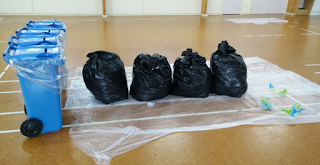This term for inquiry we have been learing about Reduce, Reuse, Recylce, and a good example we used for this subject was to read The Lorax. This week we had to pretend that we were the Lorax, and we had to write a letter to the Once-ler. This letter needed to include the words Reduce Reuse and Recycle, and something about them that the Once-ler could do to change.
Our Letter:
Oh Once-ler,
Please stop this terribleness, what you have done and are doing is heartbreaking. You have polluted the air and gotten rid of the food that everyone needs to live here. If you do not stop this nonsense, then there soon will be no Truffula trees left. Which means the environment will rot, and you will run out of business. You could reduce how many trees you cut down by replanting them, so there is still enough air to breath! If someone gives back your Thneeds you could reuse them as things like a pillowcases. Recycle things that you don’t use anymore. If your car stop working use the materials to make more useful things. I am heartbroken from this critical change, and if this keeps on happening there will not be a way to change it back to how it used to be. You have cut down almost every single Truffula tree around us, and because of that everything is being polluted. From the grass, to the clouds, to the lakes, they will soon be all gone. Just please Once-ler, stop what you are doing or for every Truffula tree you cut down, replant a new one. It will help us both, the environment won’t rot, and you’ll still be eligible to continue your business. Although could you invent a machine that runs on your pollution, because your waste is always going into the lakes the Humming Fish live in. All the animals have no choice but to leave this terrible place. Please, stop this now! Until then, I have no choice but to send the animals away.
- The Lorax































